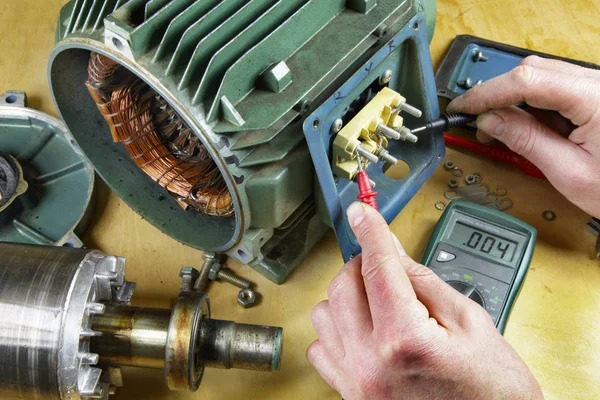5 Reasons Why Motors Fail And How To Avoid Them
Motors can last long with proper maintenance. Therefore, motor failure is imminent if you choose not to maintain your motor. Regular checks help to identify warning signs, so you can do proper repairs. If you wonder how long a motor should last you on average, here’s a simple explanation.
Electric motors (with proper maintenance) run for 30,000 to 40,000 hours on average. However, if you do nothing to care for the motor, it will break down much quicker. Repairs are expensive, and replacing a 3 phase induction motor costs much more. Some causes of motor failure are hard to identify, but here are five common reasons:
5 Causes of Motor Failure and the Solutions
If you’re lucky, the causes of your motor failure might be salvageable. Still, you should be ready to spend money to sort out more complex issues, including
1. Bearing Failure
Experts advise you to grease your motor’s bearings every three months or after 2000 hours of use. When buying a motor, check the manufacturer’s instructions for more guidance. Still, on that, over-greasing is highly discouraged. It leads to overheating and motor failure. Do the following to ensure you don’t get over grease the motor:
- Open the grease relief valves
- Clear any dirt or oil off the valves
- Open the outlet valve or remove the grease outlet plug
- Stop greasing if you feel abnormal back pressure
The Solution: Ensure you use the proper lubricant and apply the correct amounts to prevent over-greasing. Also, follow the measures indicated above before you start lubricating your motor. That way, you avoid bearing and motor failure in general.
2. Electrical Overload
Excessive loading of your motor is another cause of failure. The overload results from an excessive current flow, which is above the recommended level. Most electric motor companies in India indicate the current that allows motors to function correctly.
Usually, a low voltage supply causes the motor to take up more current than it should to make up for the shortage. Unfortunately, the result is motor failure.
The Solution: The best way to prevent electrical overload is to install over-current protection. Therefore, whenever the current is too high or low, the motor stops functioning. The over-current protection technology allows the motor to operate only when the current is right.
3. Overheating
When buying a motor, ensure you check the level of heat it can take. Manufacturers design motors differently, and you may choose one that cannot cope with the heat. Motor bearings are designed to expand during operation. However, excessive thermal expansion is detrimental.
For instance, every 10°C rise in motor temperature reduces its insulation lifespan by 50%. So, you must pay close attention to the motor’s specifications to avoid overheating.
The Solution: It might be impossible to keep the area heat free. However, keep the motor as cool as possible and reduce the temperature levels in the operating environment. Also, purchase motors depending on your working environment. Some can withstand high temperatures, while others don’t do well with heat.
4. Contamination
Dust, chemicals, and dirt are also notable causes of motor failure. When foreign bodies or impurities enter the motor, they contaminate the balls and raceways, causing vibration. Also, contaminants cause wear on motors.
It is also common for dirt and chemicals to prevent proper functionality in the cooling fan. Thus, temperature regulation is hindered to a large extent.
The Solution: Preventing contamination is fairly straightforward. Keep tools, work areas, and fixtures clean to prevent the chances of contaminants entering the motor. Also, it helps to keep motors away from grinding machines because they produce a lot of contaminants.
5. Vibration
Some people are used to their motors vibrating, thinking it’s normal. However, vibration is among the initial signs of a failing motor, so pay attention. Vibration causes motor issues that eventually cause failure. Most important is finding out the cause of the vibrations.
The causes include:
- Wrong motor positioning (on uneven or unstable surfaces)
- Loose bearings
- Misalignment
- Corrosion
The Solution: Vibration-checking machines are available in the market. These tools analyse the motor and indicate cases of vibration. Aside from that, conduct regular maintenance to check for wear, misalignment, or loose bearings.
Motors are relatively expensive. Thus, caring for them to prevent damage is an excellent way to cut costs. Motors don’t need too much maintenance, as experts advise checking after every few months of use. Regular maintenance helps to identify issues before they get out of hand and is, therefore, crucial.
